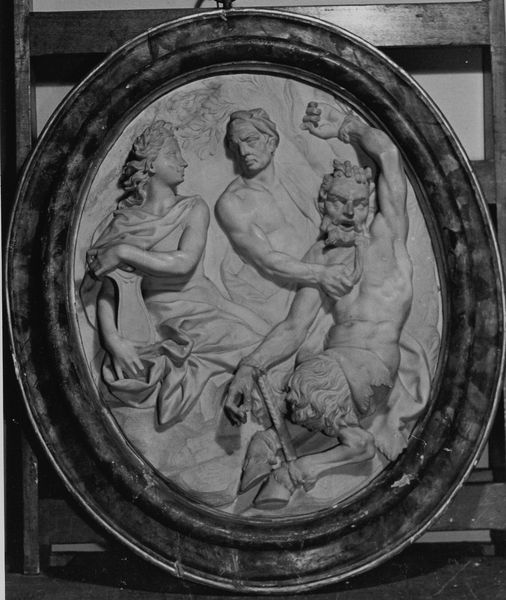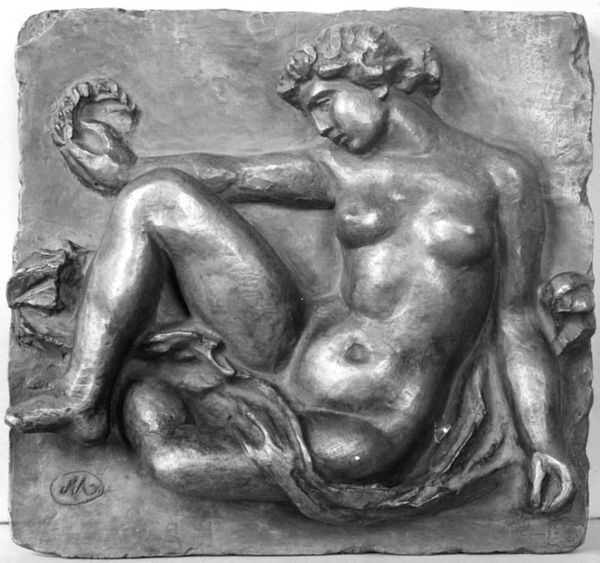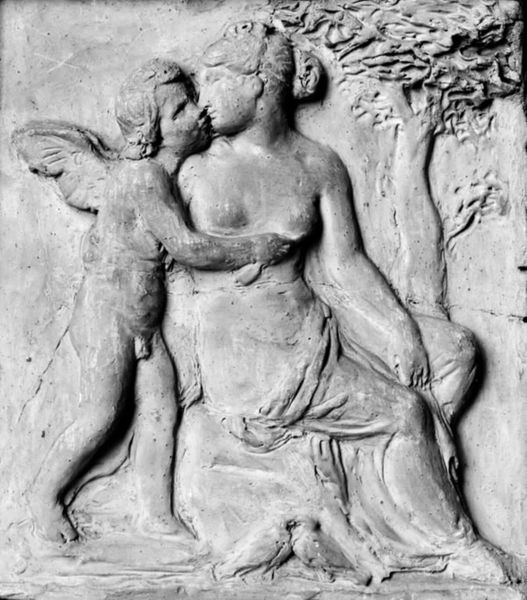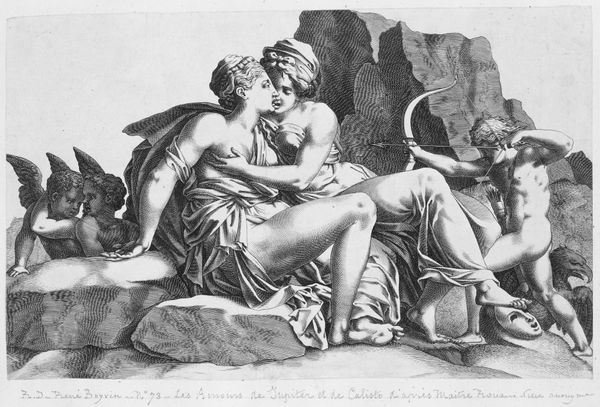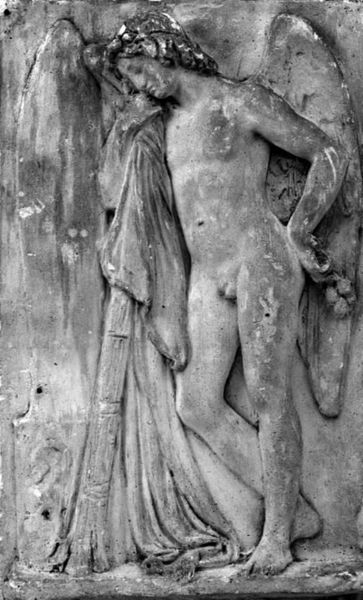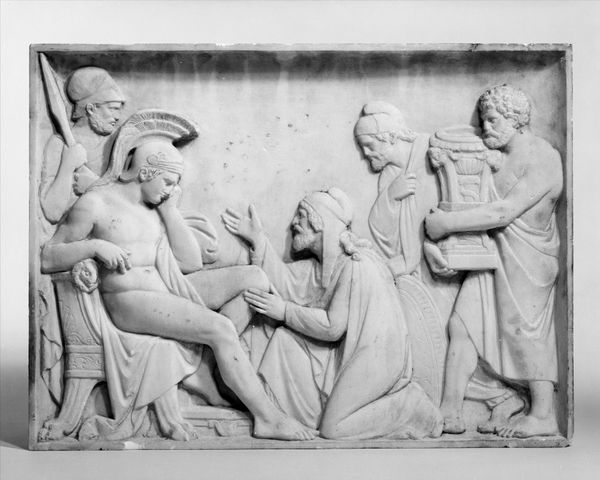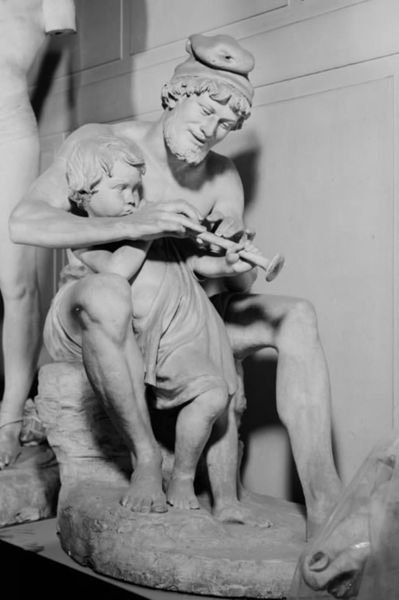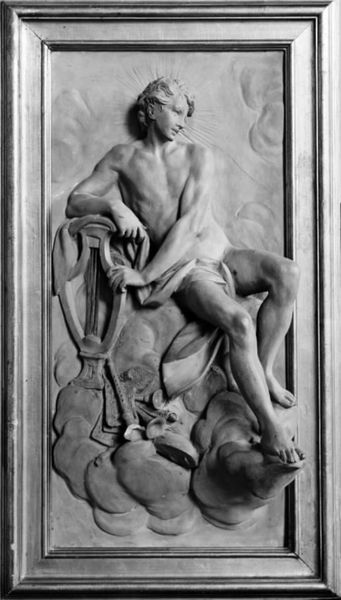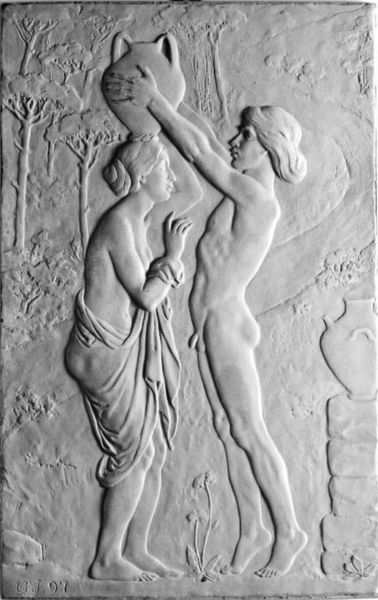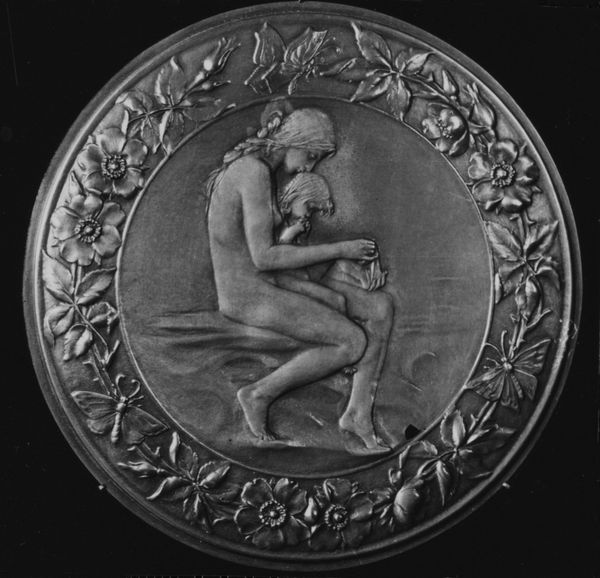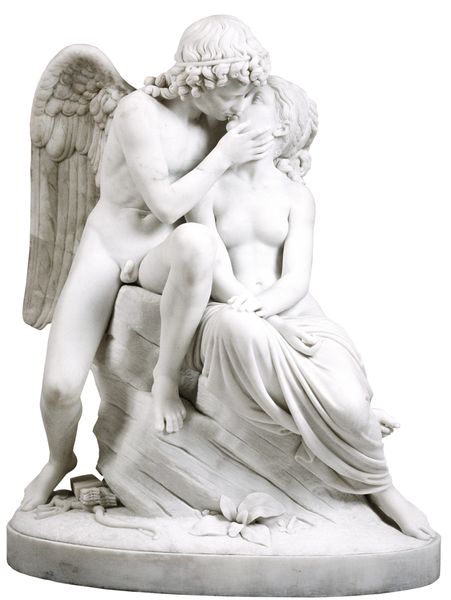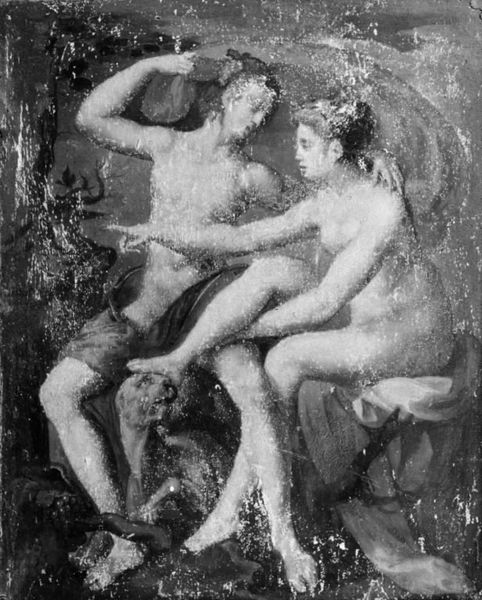
King Numa Pompilius Conversing with the Nymph Egeria in her Grotto 1792
0:00
0:00
sculpture
#
neoclacissism
#
sculpture
#
figuration
#
sculpture
#
history-painting
Dimensions: 49.5 cm (height) x 62.9 cm (width) x 10.3 cm (depth) (netto)
Bertel Thorvaldsen made this plaster relief of King Numa Pompilius and the nymph Egeria sometime in the late 18th or early 19th century. The scene depicts a king receiving divine counsel, a popular subject in European art for centuries. Here, the image creates meaning through a visual code in which classical forms and mythological subjects reference ancient virtues. Made in Rome, it reflects the neoclassical obsession with antiquity, and the way that artists turned to ancient history in search of a noble visual language. In its own time, this aesthetic was promoted by academies of art and became associated with the political establishment. To understand this relief better, it is helpful to learn about the artist's social background, the institutions that shaped his style, and the political context in which he worked. Art history is about understanding how social conditions shape artistic production, and how images gain meaning through cultural and institutional forces.
Comments
No comments
Be the first to comment and join the conversation on the ultimate creative platform.
